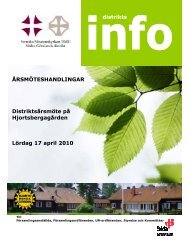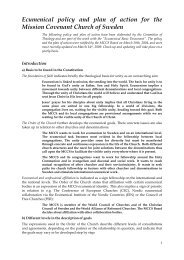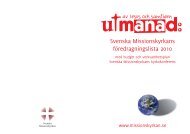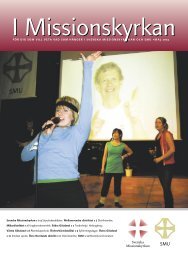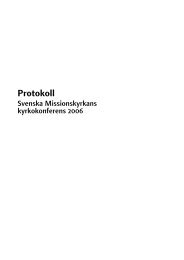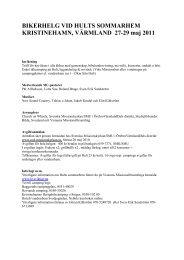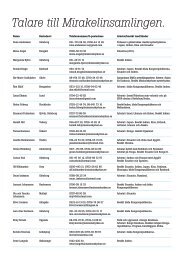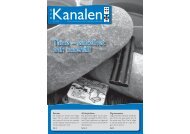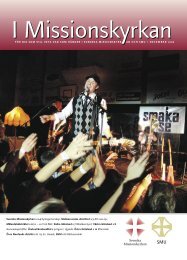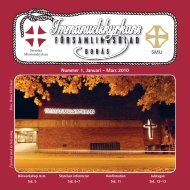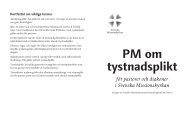Mission and Revolution in Central Asia - Svenska Missionskyrkan
Mission and Revolution in Central Asia - Svenska Missionskyrkan
Mission and Revolution in Central Asia - Svenska Missionskyrkan
You also want an ePaper? Increase the reach of your titles
YUMPU automatically turns print PDFs into web optimized ePapers that Google loves.
elong<strong>in</strong>g to the population of the country were appo<strong>in</strong>ted. The new Ch<strong>in</strong>ese name for the<br />
prov<strong>in</strong>ce was S<strong>in</strong>kiang, the New Possession. 104<br />
Already at the arrival of the <strong>Mission</strong>, Russian <strong>in</strong>fluence was obvious <strong>in</strong> the country. The<br />
Russian Consulate <strong>in</strong> Kashgar had been set up <strong>in</strong> 1882, <strong>and</strong> up to the Russian <strong>Revolution</strong> <strong>in</strong><br />
1917 the Russians had a large staff <strong>in</strong> Kashgar. The Consul-General was a high-rank<strong>in</strong>g<br />
Government official with a detachment of some one hundred Cossacks at his disposal. He<br />
also had a considerable number of consular officials at his side. After the Russian <strong>Revolution</strong><br />
the Consulate had to close. It was not reopened until 1925. The Consul-General was however<br />
not allowed to keep a Russian detachment as before. 105<br />
The Russian Consul dur<strong>in</strong>g the first mission period was a man called Petroffski. Accord<strong>in</strong>g<br />
to the missionaries, this man was a constant source of trouble to the Ch<strong>in</strong>ese. To the very last<br />
the Ch<strong>in</strong>ese authorities had tried to stop the re-open<strong>in</strong>g of the Consulate. 106 Petroffski was<br />
very efficient <strong>and</strong> tried by all means to f<strong>in</strong>d out political <strong>in</strong>formation for his government.<br />
Törnquist noted that the Consul was grateful for any “gossip” he was given, <strong>and</strong> that he paid<br />
20 öre for every piece of news “be it of any k<strong>in</strong>d”. 107 There is no evidence however, that the<br />
missionaries made use of this way of mak<strong>in</strong>g extra money. But the Consul had his network of<br />
<strong>in</strong>formants who would pick up gossip <strong>in</strong> the bazaars or elsewhere. 108 One such <strong>in</strong>formant was<br />
Father Hendrichs a former Catholic missionary. Lady Macartney writes that he was<br />
nicknamed “the Newspaper”, s<strong>in</strong>ce he was always on his feet collect<strong>in</strong>g <strong>in</strong>formation that he<br />
later passed on. 109<br />
The Russian Consulate with Consul Petroffski was very important for the <strong>Mission</strong> dur<strong>in</strong>g<br />
its early days. Among other th<strong>in</strong>gs the Consul gave the missionaries military protection <strong>in</strong><br />
1899 when a mob was threaten<strong>in</strong>g their lives. Petroffski was also a hospitable man who<br />
<strong>in</strong>vited the Swedish missionaries for d<strong>in</strong>ner every now <strong>and</strong> then. At Christmas time he used<br />
to <strong>in</strong>vite the staff from the British Consulate, the Swedish colony <strong>and</strong> other foreigners <strong>in</strong> the<br />
city for a Christmas party <strong>in</strong> his home. Lady Macartney mentions that on these occasions<br />
people were danc<strong>in</strong>g around the Christmas tree s<strong>in</strong>g<strong>in</strong>g Christmas songs each one <strong>in</strong> his own<br />
language. On one occasion there were eight languages represented: Russian, English,<br />
Swedish, French, Ch<strong>in</strong>ese, Turkish, Persian <strong>and</strong> H<strong>in</strong>di. 110 Dur<strong>in</strong>g the first years the<br />
Headquarters <strong>in</strong> Sweden were allowed to send money, letters <strong>and</strong> goods by way of the<br />
Russian Consulate to the missionaries. 111<br />
Thanks to Petroffski <strong>and</strong> his zeal, Russian trade was exp<strong>and</strong><strong>in</strong>g. Already the first<br />
missionaries could note the variety of Russian products for sale <strong>in</strong> the shops. Sven Hed<strong>in</strong> who<br />
dur<strong>in</strong>g his travels <strong>in</strong> the country hade become a good friend of Petroffski’s, notes that<br />
Petroffski “exercised an almost almighty <strong>in</strong>fluence”. 112<br />
Ch<strong>in</strong>a’s <strong>Central</strong> Government tried to counteract this grow<strong>in</strong>g Russian <strong>in</strong>fluence by<br />
encourag<strong>in</strong>g Ch<strong>in</strong>ese from other parts of the vast empire to move to Eastern Turkestan. At the<br />
104<br />
Lundahl, 1917, p. 60 f. Hayit, 1917, p. 141 ff.<br />
105<br />
Skr<strong>in</strong>e, 1926, p. XV, 66.<br />
106<br />
Hed<strong>in</strong>, 1893 II, p. 446 <strong>and</strong> p. 449.<br />
107<br />
Törnquist, 1926, p. 183.<br />
108<br />
Mannerheim, 1940, p. 47.<br />
109<br />
Macartney, 1931, p. p. 49. Younghusb<strong>and</strong>, 1896, p. 166 ff.<br />
110<br />
Macartney, 1931, p. 50.<br />
111<br />
Larsson, 1919, p. 56.<br />
112<br />
Hed<strong>in</strong>, 1893, p. 57. Gottfrid Palmberg writes about these enormous stocks of goods <strong>in</strong>tended for Eastern<br />
Turkestan, that he saw <strong>in</strong> Andidjan, on the Russian side of the border. There was also heavy caravan traffick.<br />
(Palmberg, 1961, nr 4.)<br />
13



